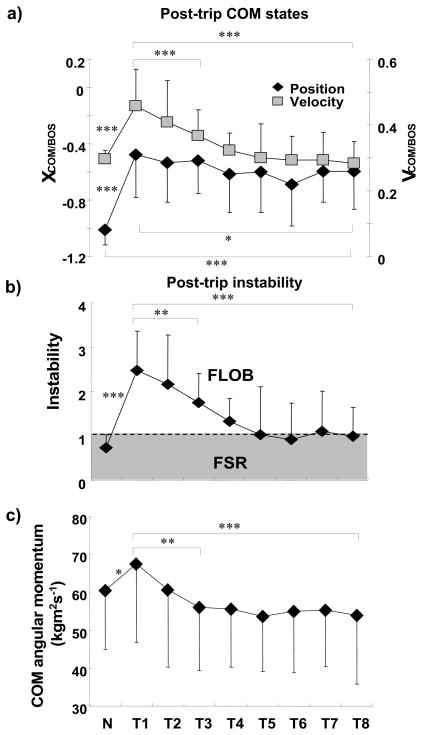Figure 5.
Shown are the group means (±SD) of adaptive changes in a) post-trip center-of-mass (COM) position and velocity, b) post-trip instability, and c) COM angular momentum at recovery-foot-touchdown for the regular walking trial (N) prior to the first trip and all 8 trips (T1–T8). The post-trip was measured at the recovery-foot-touchdown after the obstacle-hit. The dashed line in figure 5b represents the threshold of forward loss of balance (FLOB). A stability value of greater than 1 indicated less stability against FLOB (excessive forward instability); a stability value between 0 and 1 indicated that the COM state was within the feasible stability region (FSR, shade). The positive angular momentum corresponded to a clockwise rotation (or forward rotation). * p < 0.05; ** p < 0.01; *** p < 0.001.

